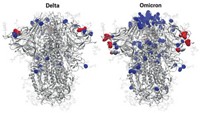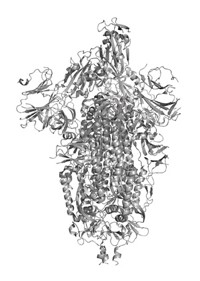Advertisement
Grab your lab coat. Let's get started
Welcome!
Welcome!
Create an account below to get 6 C&EN articles per month, receive newsletters and more - all free.
It seems this is your first time logging in online. Please enter the following information to continue.
As an ACS member you automatically get access to this site. All we need is few more details to create your reading experience.
Not you? Sign in with a different account.
Not you? Sign in with a different account.
ERROR 1
ERROR 1
ERROR 2
ERROR 2
ERROR 2
ERROR 2
ERROR 2
Password and Confirm password must match.
If you have an ACS member number, please enter it here so we can link this account to your membership. (optional)
ERROR 2
ACS values your privacy. By submitting your information, you are gaining access to C&EN and subscribing to our weekly newsletter. We use the information you provide to make your reading experience better, and we will never sell your data to third party members.
Vaccines
Covid-19
UT Austin and Mount Sinai partner to create low-cost COVID-19 vaccine
Clinical trials begin with the second generation of the SARS-CoV-2 spike protein, called HexaPro
by Ryan Cross
April 8, 2021
| A version of this story appeared in
Volume 99, Issue 13

Scientists at the University of Texas at Austin and the Icahn School of Medicine at Mount Sinai have created a second-generation COVID-19 vaccine that they hope will become a cheap but effective tool to help get shots to more parts of the world, particularly low- and middle- income countries.
The vaccine, called NDV-HXP-S, is named for the two technologies that it is based on: a genetically engineered Newcastle disease virus, created by Peter Palese and colleagues at Mount Sinai, and a stabilized version of the SARS-CoV-2 spike protein called HexaPro made in Jason McLellan’s lab at UT Austin.
The two technologies have been used separately as the basis of vaccines that protected mice from becoming infected with SARS-CoV-2, the coronavirus that causes COVID-19, but the combination of the two technologies is new. Clinical trials of the vaccine have already begun in Vietnam and Thailand, and a trial is planned in Brazil as well. It is the first time a vaccine based on HexaPro has been tested in humans.
Support nonprofit science journalism
C&EN has made this story and all of its coverage of the coronavirus epidemic freely available during the outbreak to keep the public informed. To support us:
Donate Join Subscribe
SARS-CoV-2 uses the spike proteins studding its surface to grab onto a cell. Once it has a firm grip, the spike undergoes a dramatic transformation—elongating, piercing the cells, and pulling the virus inside. Developing good immunity to the virus requires producing antibodies that target the spike before it shape-shifts and infects our cells—its so-called prefusion conformation. Unfortunately for vaccine developers, the spike is unstable and liable to spring into its elongated postfusion form spontaneously.
Scientists knew about this problem before the pandemic from studying the spike proteins of other coronaviruses. In 2017, McLellan led a team that discovered a trick for keeping spike proteins locked in their prefusion conformation: substituting two prolines—the most rigid amino acids—for two other amino acids in a key joint of the spike.
In early 2020, McLellan’s lab applied that trick, called the 2P mutation, to create a stable form of the spike protein for SARS-CoV-2. The 2P mutation is used in the Pfizer, Moderna, and Johnson & Johnson COVID-19 vaccines authorized in the US. AstraZeneca’s shot does not use the 2P mutation.
After the first COVID-19 vaccine trials began last year, McLellan’s team continued to look for ways to stabilize the spike further. After testing more than 100 variants of the protein, they found one with 6 proline substitutions throughout the spike’s structure that resulted in 10 times as much spike protein being produced in cells grown in the lab. They dubbed the new protein HexaPro.
HexaPro can be used in any kind of vaccine, including protein-based vaccines and messenger RNA vaccines. Scientists at Mount Sinai added the gene for HexaPro to a viral vector vaccine based on an engineered Newcastle disease virus. That virus normally infects birds but not humans, which makes it easy to grow in chicken eggs—the way most annual flu vaccines are made. The Mount Sinai and UT Austin groups hope this feature will make the vaccine cheap and easy to manufacture worldwide, and UT Austin is sharing its HexaPro design for free with 80 low- and middle-income countries.
The vaccine is not a sure thing, however. The Newcastle disease viral vector is considered a live virus, capable of replicating, unlike the adenoviral vectors used in the AstraZeneca and J&J vaccines. And while the adenoviral vectors only contain the genetic code of the spike protein, the Newcastle disease viral vector also displays the spike proteins on its surface.
Although experimental vaccines based on the Newcastle disease viral vector have been tested in humans before, there are no approved human vaccines based on the technology. Merck & Co. and International AIDS Vaccine Initiative tried making a similar vaccine based on an engineered vesicular stomatitis virus, but they abandoned the effort after poor results in an early clinical trial.




Join the conversation
Contact the reporter
Submit a Letter to the Editor for publication
Engage with us on Twitter